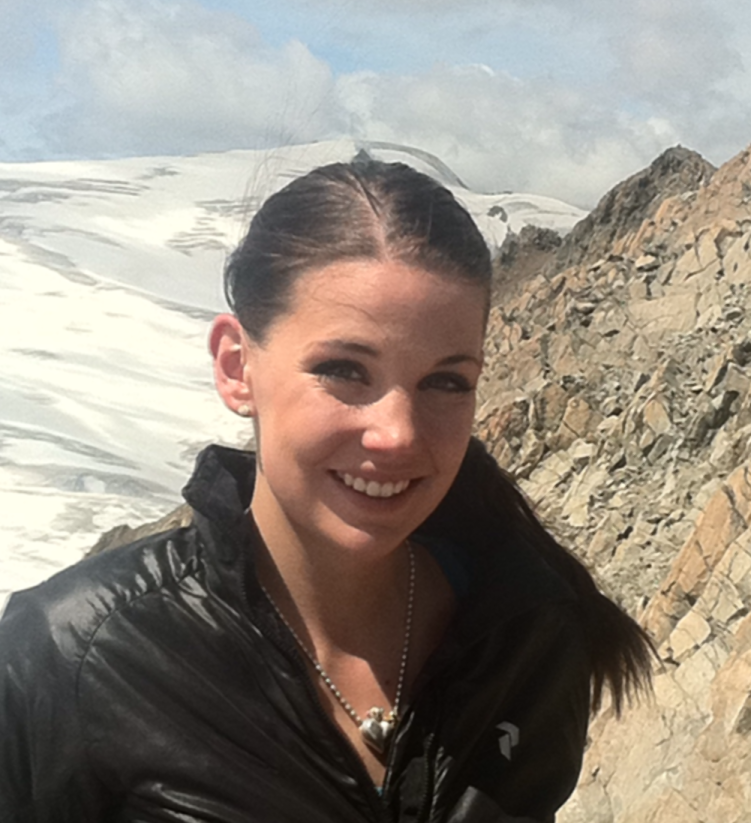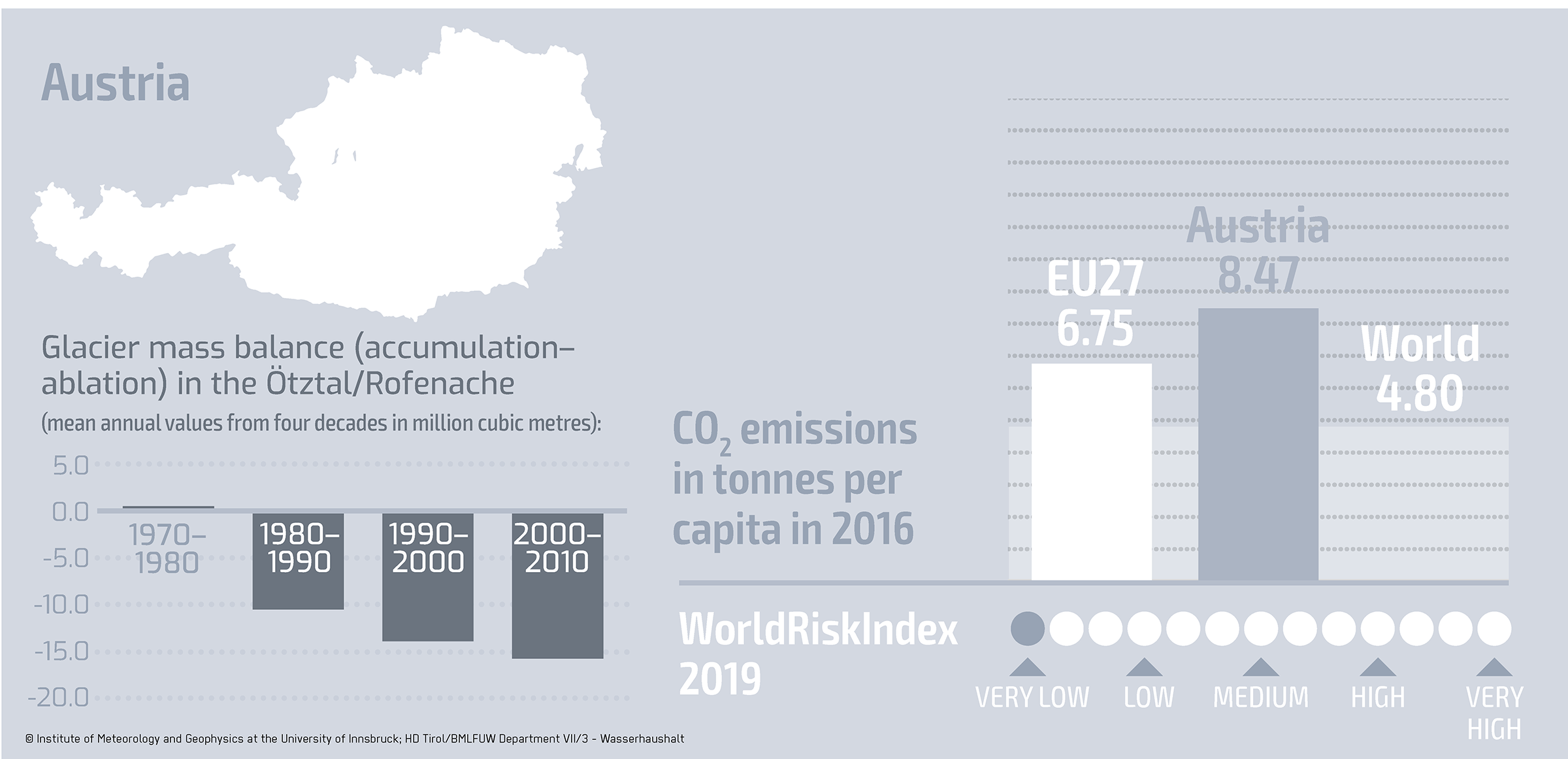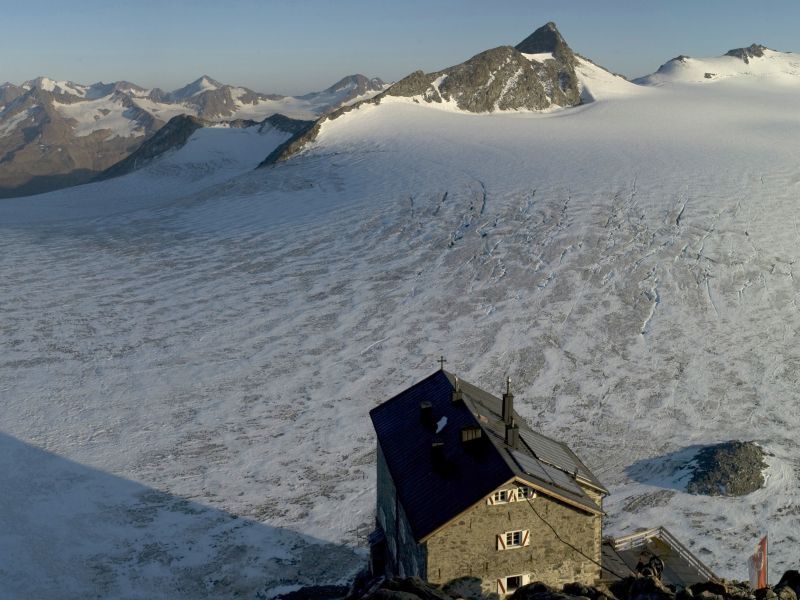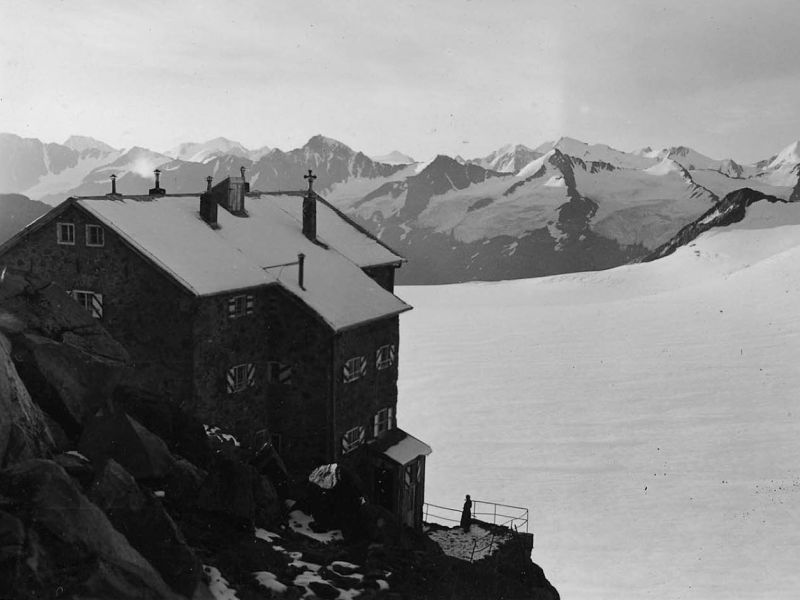Melting alpine glaciers
Anna Pirpamer, manager of Brandenburger Haus alpine hut
© Anna Pirpamer

“I have managed Brandenburger Haus alpine hut for four years now. From year to year, I have noticed that many mountains, ridges and passages, which used to be covered completely or at least partly by ice and snow, are now showing a lot of unconsolidated slip rock, and the danger of falling rocks is rising. By far the biggest problem for operation of the hut will be the disappearance of the little ice field located directly above the hut. We obtain our water for general use and drinking from this ice field. It is the only practical source for us. Once this disappears, major infrastructural measures will be necessary to gain access to water. It remains unclear how this can be achieved.”
Scientific Background
The Kesselwandferner glacier is currently up to 140 m thick and 4,400 m long. It flows between 5 m and 90 m a year from an altitude of 3,500 m down to 2,700 m above sea level. Although it still accumulates mass in its upper sections, it is losing ice mass as a whole due to accelerated melting in the lower sections. It is one of the 93 glaciers out of the total of 95 surveyed in Austria that had shrunk in 2012. In the past ten years the Kesselwandferner glacier and two neighbouring glaciers together lost almost 15 million cubic metres of ice per year.
“The reason for the retreat is the above average air temperatures in recent years,” explains Dr. Andrea Fischer, who heads the Glacier Monitoring Service (of the Austrian Alpine Club).
Since alpine glaciers mainly melt in summertime, it is in July and August where the melting glacial ice has a special significance: Then, up to 7% of the water in the River Danube at Passau comes from alpine glaciers.


